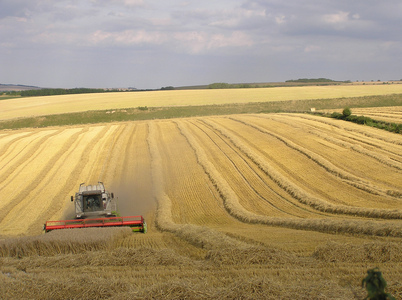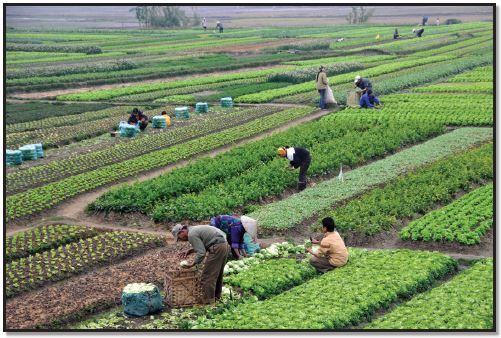Ecological Results of Commercial Farming vs Subsistence Farming: What You Need to Know
Wiki Article
Checking Out the Technological Advancements Transforming Accuracy Farming Today
As the farming industry comes to grips with the obstacles of feeding a growing populace and ensuring sustainability, technical advancements are improving the landscape of accuracy farming. The combination of drones for aerial data collection, the deployment of IoT tools for real-time tracking, and the application of AI-driven analytics are not just enhancing efficiency however additionally changing decision-making procedures. These advanced technologies promise enhanced productivity and decreased environmental impact. The complete effect of these innovations on traditional farming practices and their lasting sustainability stays a topic ripe for expedition. What does this technological advancement absolutely suggest for the future of agriculture?Drones in Agriculture

Drones promote exact surveillance of big agricultural areas, recognizing locations needing interest, such as insect problems or nutrition shortages. This targeted approach permits the enhanced application of plant foods, pesticides, and water, lowering waste and environmental influence. Drones considerably reduce the time and labor traditionally required for area inspections, raising efficiency and decreasing operational expenses.
Beyond information collection, drones contribute in precision growing and crop splashing, ensuring uniform distribution and minimizing ground disruption. The integration of drones right into farming exemplifies a shift in the direction of data-driven farming techniques, where modern technology not only augments standard approaches but additionally introduces innovative remedies for future obstacles. As the farming market faces pressures from environment change and populace development, drones provide an encouraging avenue for lasting increase and resource conservation.
Satellite Imagery Breakthroughs
While drones have actually significantly improved accuracy farming through airborne data collection, satellite images continues to play a crucial role in widening the range and scale of agricultural tracking. Satellite technology offers huge insurance coverage, enabling farmers to accessibility crucial understandings over considerable locations, which is not practical with drone technology alone. This is especially useful for large-scale farms that need detailed, regular data.Advancements in satellite imagery have brought about considerable improvements in resolution and frequency of data capture. This timely data is vital for making educated, real-time choices to maximize crop yields and source use.
Additionally, the combination of hyperspectral and multispectral images has actually enhanced the data high quality, enabling the accurate recognition of plant species, development phases, and tension variables. With machine knowing formulas, farmers can analyze satellite information more efficiently, forecasting crop efficiency and prospective issues with unmatched accuracy. These improvements are critical in improving sustainable agricultural techniques globally.
IoT in Farming
The arrival of the Net of Things (IoT) in farming represents a standard change in agricultural monitoring practices, supplying unrivaled connectivity and data-driven insights. As IoT tools proliferate across farmland, they supply real-time monitoring and control over different farming processes. These smart tools, which consist of dirt sensors, climate stations, and livestock radar, accumulate and transmit data to main platforms, enabling farmers to make enlightened decisions and maximize source usage.IoT modern technology assists in precision farming by improving the precision of data collected from the area. Soil wetness sensing units can discover variations in moisture levels, permitting for precise watering scheduling, which saves water and promotes much healthier plant growth. Climate sensing units supply vital info on temperature level and humidity, assisting in bug and illness management via timely treatments.
In addition, IoT-enabled equipment, such as autonomous tractors and drones, better enhance operations by automating labor-intensive tasks and decreasing human mistake. These developments not just enhance effectiveness however additionally contribute to sustainability by minimizing inputs like water, fertilizers, and chemicals. As IoT remains to evolve, its assimilation into farming practices will likely grow, driving productivity and sustainability in the farming market.
AI-Driven Analytics
Building upon the robust information collection capabilities of IoT, man-made knowledge (AI) becomes a powerful device in transforming raw data into actionable insights for accuracy farming. AI-driven analytics leverages artificial intelligence formulas to assess substantial datasets gathered from satellites, sensing units, and drones. This allows farmers to make educated choices relating to plant monitoring, soil wellness, and resource appropriation. By recognizing patterns and anticipating results, AI empowers farmers to maximize their practices, visit here bring about increased yield and minimized waste.
Additionally, AI-driven analytics support precision farming by providing customized suggestions for planting routines and irrigation monitoring. These insights aid enhance water use, aligning with sustainability goals. By providing real-time understandings and strategic guidance, AI-driven analytics not just enhance functional efficiency yet also add in the direction of sustainable agricultural techniques, protecting food supply chains for the future.
Robotics and Automation
In the realm of precision farming, robotics and automation are transforming agricultural practices by supplying unprecedented performance and precision - commercial farming vs subsistence farming. These technologies are increasingly being incorporated into various farming procedures, from growing and harvesting to tracking and maintenance. Automated systems, such as independent tractors and robotic harvesters, enable the optimization of labor-intensive tasks, reducing human error and labor expenses. These devices are outfitted with gps and sensors innovation, allowing them to operate with high precision and adapt to differing area problems.Furthermore, robotic systems boost crop monitoring and management. Drones equipped with imaging modern technology can survey big locations swiftly, giving real-time data on plant wellness and dirt problems. This information is crucial for look at this web-site making notified decisions relating to irrigation, fertilization, and bug control, therefore boosting return and source effectiveness. In addition, robot weeders and planters increase the accuracy of these tasks, resulting in more effective use inputs.
The assimilation of robotics and automation in precision farming additionally deals with sustainability worries (commercial farming vs subsistence farming). By optimizing inputs and making best use of results, these innovations assist minimize environmental impact. Robotics and automation not only transform farming productivity yet likewise add significantly to sustainable farming methods.
Final Thought
Technological innovations are basically reshaping accuracy farming by integrating innovative tools like drones, satellite imagery, IoT devices, AI-driven analytics, and robotics. Robotics further enhance procedures, leading to cost decreases and enhanced effectiveness, inevitably transforming traditional farming approaches.Revolutionizing the agricultural landscape, drones have actually emerged as an essential device in precision farming.IoT innovation facilitates precision farming by boosting the precision of information collected from the area.Structure upon the durable data collection capacities of IoT, man-made intelligence (AI) arises as a powerful tool in transforming raw information into workable insights for precision farming.In the realm of accuracy farming, robotics and automation are reinventing farming practices by using unprecedented performance and precision.Technological developments are fundamentally reshaping precision farming by integrating sophisticated devices like drones, satellite images, IoT gadgets, AI-driven analytics, and robotics.
Report this wiki page